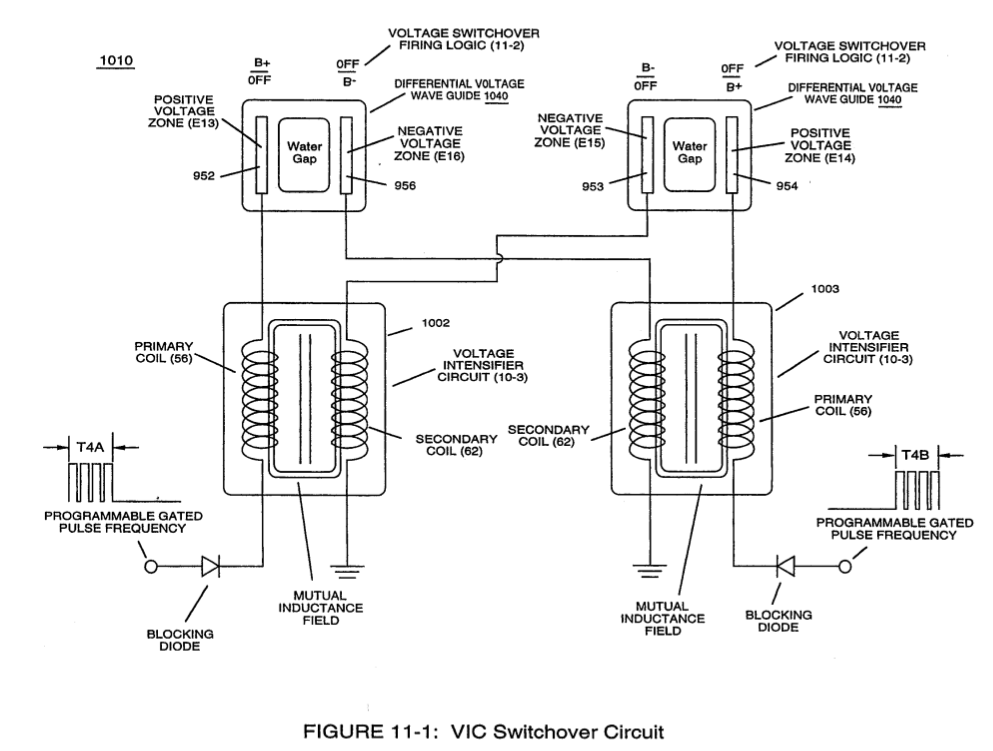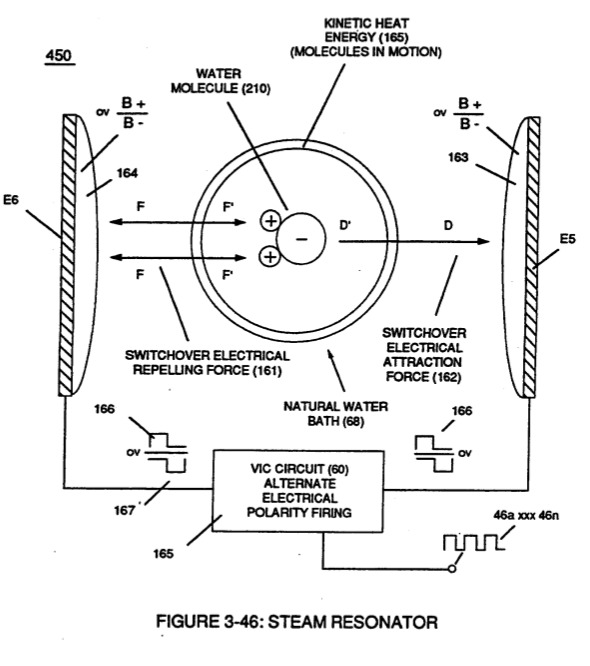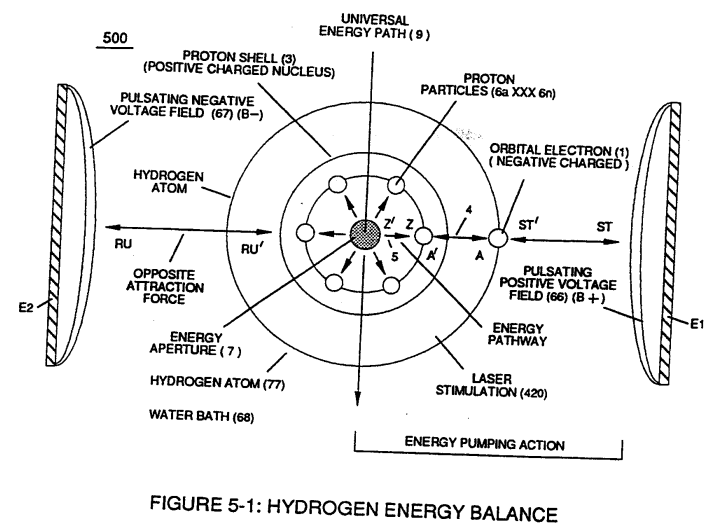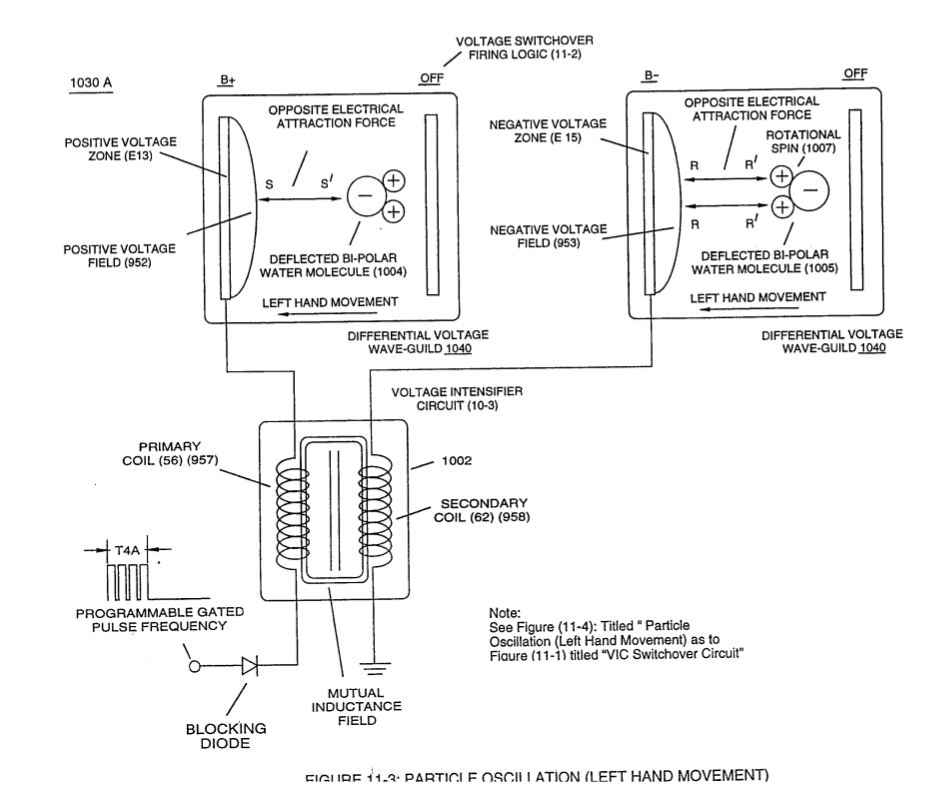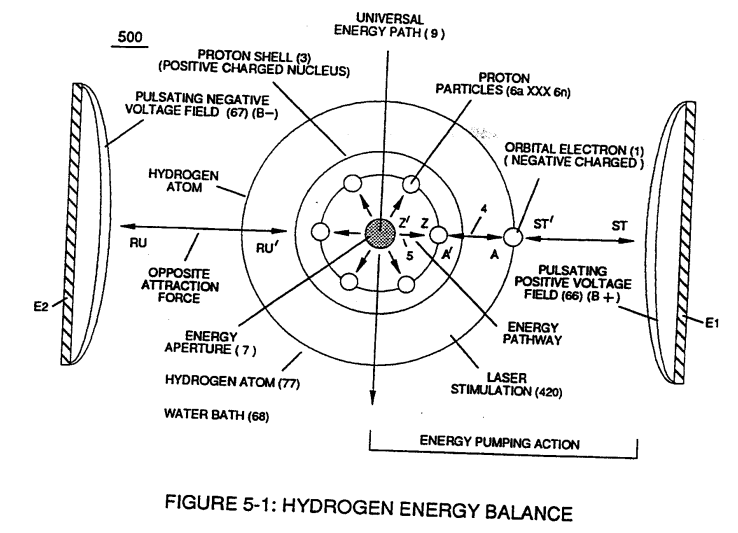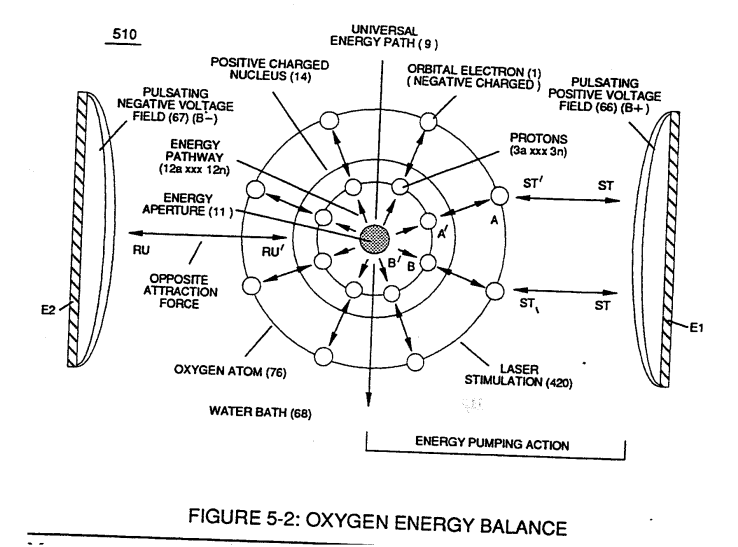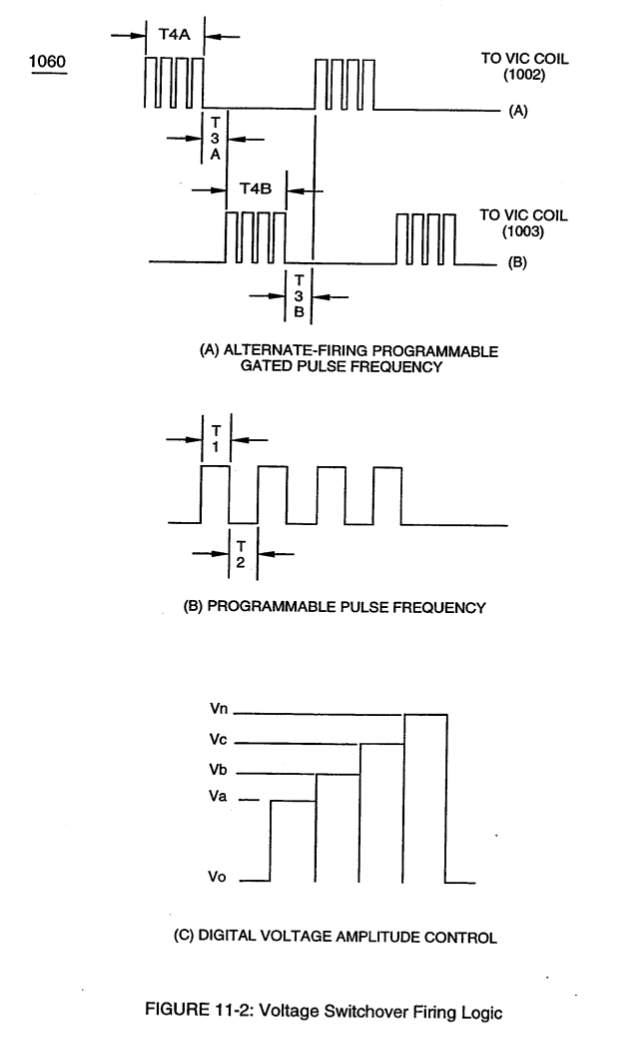Voltage Flexing Process
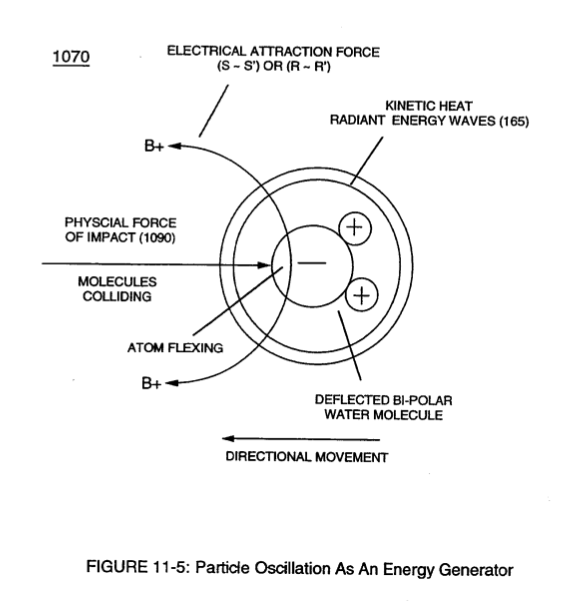 Particle oscillation as a "Energy Generator" by way of "physical impact" caused by a singular unipolar voltage pulse wave-form alternately polarity triggered is yet another method beyond the prior art to flex the water molecule to release thermal energy (Kinetic Energy) from the water molecule atom (s) without the need of gas combustion brought about by gas separation from water, as so illustrated in (1050) of Figure (11-5).
Particle oscillation as a "Energy Generator" by way of "physical impact" caused by a singular unipolar voltage pulse wave-form alternately polarity triggered is yet another method beyond the prior art to flex the water molecule to release thermal energy (Kinetic Energy) from the water molecule atom (s) without the need of gas combustion brought about by gas separation from water, as so illustrated in (1050) of Figure (11-5).
In order to accomplish this task, dual unipolar voltage pulse circuit (1010) of Figure (11-1) is, now, utilized to deflect (Physical Movement) the bipolar electrically charged water molecule (210) of Figure (3-46) while undergoing and experiencing both physical and electrical stress, simultaneously
|
dual unipolar voltage pulse circuit (1010) of Figure (11-1) |
bipolar electrically charged water molecule (210) of Figure (3-46) |
... causing atomic flexing of the water molecule atom (s) energy aperture (7) of Figure (5-1) which, in turns, releases radiant thermal heat energy (165) from the atom structure (s), as further illustrated in (450) of Figure (3-46).
|
energy aperture (7) of Figure (5-1) |
As applied external opposite electrical attraction forces (S-S') and/or(R-R') as so shown in (1030) of figure (11-3) captures and electrically locks onto either the negative charged oxygen atom or onto the positive charged hydrogen atom (s)
|
(1030) of figure (11-3) |
 ... whichever the case may be, the applied stationary voltage fields (952/E13 – 953/E14) or (954/E15 – 956/E16) alternately switch over periodically superimposes electrical stress forces (S-S' and R - R') onto the energy spectrum of the water molecule atom (s )(210) while physical flexing (951) of Figure (11-5) of the water molecule atom (s) occurs
... whichever the case may be, the applied stationary voltage fields (952/E13 – 953/E14) or (954/E15 – 956/E16) alternately switch over periodically superimposes electrical stress forces (S-S' and R - R') onto the energy spectrum of the water molecule atom (s )(210) while physical flexing (951) of Figure (11-5) of the water molecule atom (s) occurs
... disrupting the spin-velocity of water molecule atom (s) orbiting electrons (s)
... forcing energy Apertures (7) of both unlike atoms of the water molecule (500) of Figure (5-1) and (510) of Figure (5-2) to be momentarily enlarged to a greater size (Particle flexing called hereinafter Particle Oscillation), separately but simultaneously
|
(500) of Figure (5-1) |
(510) of Figure (5-2) |
... allowing a greater amount of energy to enter into, travel through, and pass beyond the energy spectrum of each stimulated atom (s), respectfully
... emitting the additive/surplus energy away from the excited atom (s) in the form of radiant thermal heat energy (165) when the flexed atom (s) (undergoing physical/electrical stress) returns to stable state of atomic equilibrium once applied electrical pulse-voltage wave-form (952 953) or (954 - 956) is electrically switch off and permitted to collapse back toward electrical ground state of zero volts (0V).
Repetitive formation of pulse voltage fields (952a xxx 952n) - 953a xxx 953n) or (954a xxx 954n- 956a xxx 956n) continues this "Voltage Energized Thermal Transference Effect" (1050) of Figure (11-5) (hereinafter called Atomic Flexing Process) during each and every pulse voltage on-time, as so illustrated by way of gated pulse-voltage waveform (1020) of Figure (11-2).
|
"Voltage Energized Thermal Transference Effect" (1050) of Figure (11-5) |
gated pulse-voltage waveform (1020) of Figure (11-2) |
In essence, then, the continued flexing of a liquid or gas atoms being exposed to physical stress (954) by an external electrical attraction force (S-S' IR-R') is, herein, a more effective way to induce and propagate "Particle Oscillation" as an "Energy Generator" since voltage potential of opposite polarity poses a greater "Differential of Potential" over the prior art.
(See Memo WFC 429 titled" Optical Thermal Lens" as to Memo WFC 424 titled "Atomic Energy Balance of Water" for further references).

